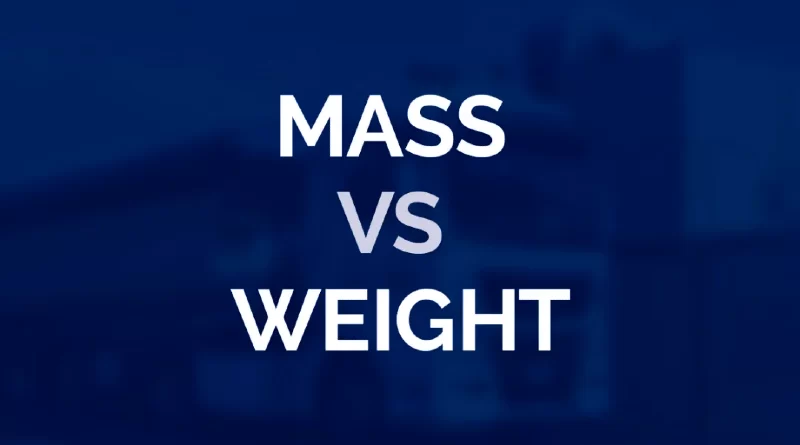What Is the Difference Between Mass and Weight
Mass and weight are concepts that many often confuse, but they have different meanings in physics. Mass refers to the amount of matter present in an object. Conversely, weight is the force exerted on an object due to gravity.
To comprehend the differences between mass and weight, it is essential first to understand the concept of force. Force is any interaction that causes an object to undergo a change in motion. Force can be measured in units of Newtons (N). Therefore, one Newton is defined as the force necessary to accelerate a mass of one kilogram (kg) at a rate of one meter per second squared (m/s²).
So, What Is Mass?
Mass is a measure of the quantity of matter in an object. It is measured in kilograms (kg) or grams (g). Mass is a fundamental property of an object and does not change based on its location or environment.
What Is Weight?
Weight, however, is the force exerted on an object due to gravity. Therefore, an object’s weight can vary depending on its location (as the force of gravity is not constant throughout the universe).
Weight is measured in units of Newtons (N) or pounds (lb).
Where Do the Differences Lie?
To further illustrate the difference between mass and weight, consider the example of a person standing on a scale. The scale measures the force exerted on the person due to gravity, which is their weight. If the person were to travel to the moon, their weight would be less due to the weaker gravity on the moon. However, their mass would remain the same as it is an intrinsic property of their body.
Another example is a balloon filled with helium. The balloon has a mass, but it floats upward when released into the air. This effect is because the force of gravity pulling down on the balloon is less than that of the helium pushing up. The balloon’s weight, however, is still present and can be measured if you were to weigh it on a scale.
It is important to note that while mass and weight are not the same, they are related. This correlation is because the weight of an object is directly proportional to its mass. You can calculate this association using the formula: weight = mass x gravitational acceleration (F=ma). Gravitational acceleration is the acceleration due to gravity and is approximately 9.81 m/s² on the surface of the Earth.
Therefore, using the term weight when referring to an object’s mass is acceptable in common applications- as long as your referral remains confined to Earth.
Why Is Differentiation So Important?
One common mistake is using the terms mass and weight interchangeably, which can lead to confusion and calculation errors. However, this specificity primarily only applies to scientific circles, including industries like engineering, aviation and aerospace, astronomy, mechanics, physics and chemistry. Otherwise, using ‘mass’ and ‘weight’ interchangeably in layperson circles is okay.
However, please note that there are numerous instances where the terms’ essential differences become evident, particularly as an object’s weight often changes, for example, at extreme altitudes.
In conclusion, mass and weight are technically two distinct concepts. Mass refers to the measure of matter in an object and is an intrinsic property of that object, while weight is the force exerted on an object due to gravity.

